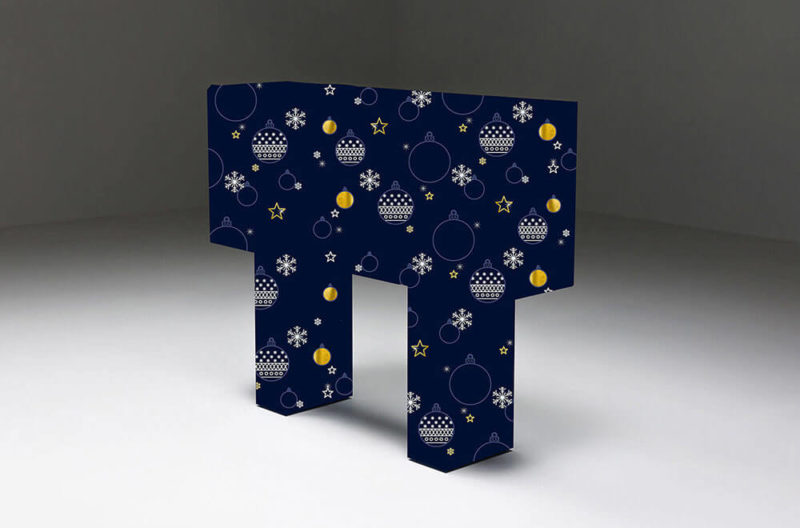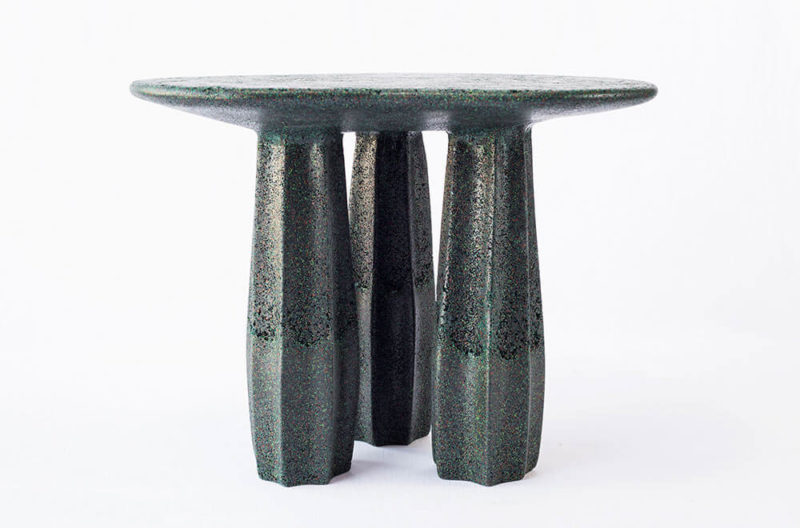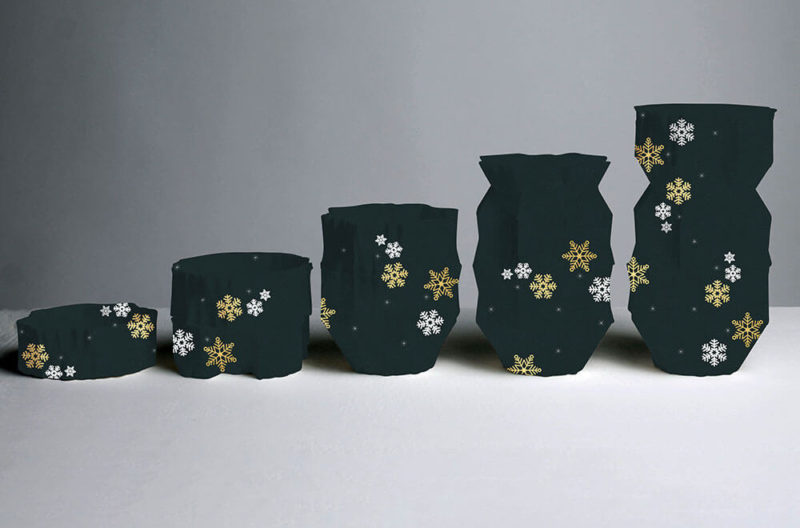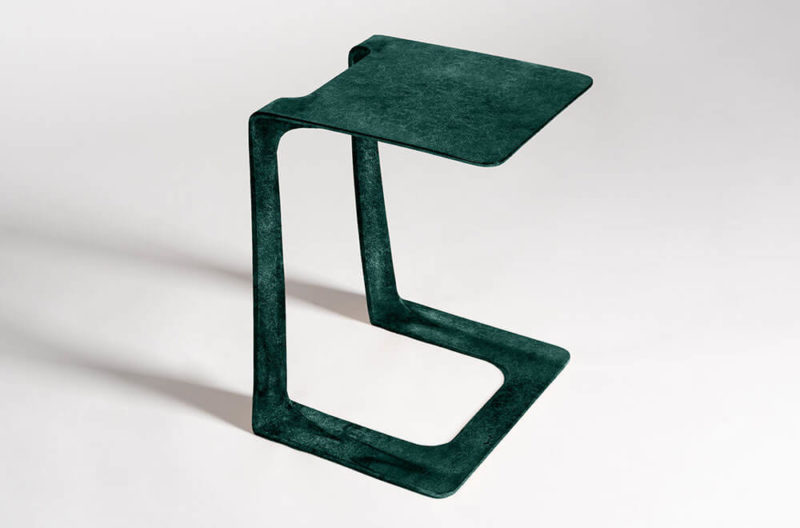‘ON/’ stool, 2021
Germane Barnes and the University of Miami

Germane Barnes and the University of Miami, ON/’ chair, 2021, presented by Lexus for Design Miami/ 2021
COURTESY: Germane Barnes and the University of Miami / PHOTOGRAPH: @stevebenisty
THE VERNACULAR LIES at the core of Miami-based designer and architect Germane Barnes’s practice. Since he designed a DVD stand with a cantilever arm for his mother at age nineteen, the founder of Miami-based Studio Barnes has been making furniture that stems from his own experiences, as well as those in his immediate communities.
Barnes adopted the Art Deco influence – particularly the arch form, which is prevalent throughout Miami’s South Beach – as the visual key for the seating arrangement in his recent Lexus project, ‘ON/’ during Design Miami/. The seats include four variously-shaped stools and a table made out of wood, concrete and plexiglass. This large cube-formed stool, chosen for our Object of the Week, is carved with upside down arches, and finished with a translucent plexiglass surface sitting on top of the hollow crown-like body. Besides reflecting Miami’s architectural heritage, the U-form form salutes the archways across the campus at the University of Miami School of Architecture where Barnes is an Assistant Professor. “In addition to testing how far I could manipulate the arch form, I am also interested in discovering the non-white history of Moorish architecture,” he tells The Design Edit. “Unless I am given a design brief, my work derives from cultural references around me.”
Barnes will travel to Europe in February to study the contributions of non-Western constructors through a grant from Harvard University Graduate School of Design’s Wheelwright Prize. A little closer by, Miami’s Opa-Locka neighbourhood – where Barnes conducts community-based urban projects with students from his Community Housing & Identity Lab (CHIL) – is also abundant with Moorish Revival architecture, dating back to the development initiatives of the 1920s. “The wheelhouse of my work is that narratives lie deep inside for exploration, although they’re not mentioned in the wall text,” he says.
Barnes’s previous line of chairs, ‘Uneasy lies the head that wears the crown’, is in public collections such as San Francisco MoMA, the Museum of African American History, and the LA County Museum of Art. The designer travelled around American cities to observe the rituals of porch culture and its architectural positioning between interiority and exteriority. He transformed the typical porch rocking chair into a series of static chairs made out of wood, metal and woven fabric. Various back patterns assume the silhouette of a comb crowned with different patterns inspired by Bahaman music bands and carnivals, as well as Black hair.
Out of thirty chairs Barnes designed for his Lexus collaboration, six pieces went into production at a Portland-based foundry. The designer is interested in increasing production in the near future and expanding the collection. “I’ve always made furniture, but with larger means and possibilities under my belt, I am only looking to explore it further,” Barnes adds.







